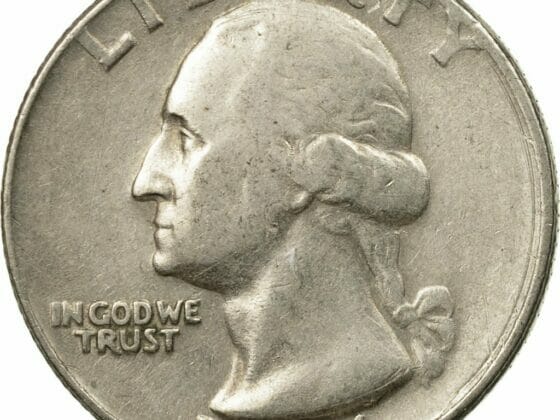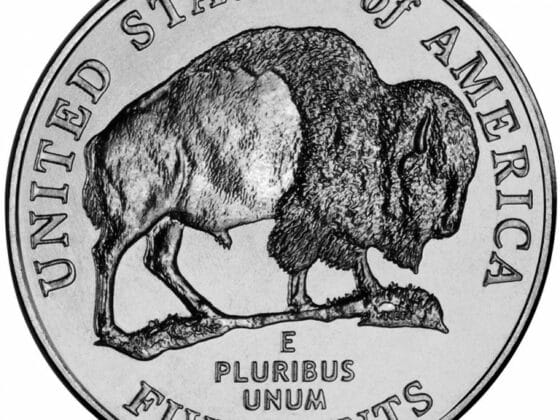Founded in 1792, the United States Mint introduced its first one-cent coin a year later, featuring the image of Lady Liberty with flowing hair. This iconic design remained in circulation for over 60 years, later making way for the two-year Flying Eagle design, followed by the renowned Indian Head penny, which was produced for half a century.
In 1909, a milestone was reached when the U.S. Mint adorned the one-cent coin with President Abraham Lincoln’s likeness, marking the first time a U.S. president appeared on American currency. The Lincoln Cent has since become the longest-running coin series in U.S. history, circulating through countless hands for well over a century.
The year 1941 stands out as a pivotal moment in the Lincoln penny series. This was a tumultuous time for the United States, with the nation on the brink of entering World War II. Coins serve as tangible relics of history, and the 1941 penny encapsulates the essence of an extraordinary era. In this guide, we will explore the intricacies of this special coin, focusing on its design, market value, production figures, and any notable errors.
Table of Contents
The 1941 Wheat Penny Design & Composition

The 1941 Penny Design
Abraham Lincoln, revered as one of the most consequential leaders in American history, is widely celebrated for guiding the nation through the Civil War and abolishing slavery prior to his assassination. In commemorating his 100th birthday, the U.S. Mint honored him by featuring his likeness on the one-cent coin.
Over its lengthy history, the design of the Lincoln penny has evolved, particularly on the reverse side. For its initial 49 years, the coin showcased two sheaves of wheat, reflecting the nation’s agrarian roots. Then, for the subsequent 49 years, the penny’s reverse was adorned with the Lincoln Memorial, honoring Lincoln’s 150th birthday.
A special edition emerged in 2009, marking both Lincoln’s bicentennial and the centennial of the Lincoln cent itself; the Mint released four unique designs, each celebrating different milestones in Lincoln’s life.
In 2010, the U.S. Mint introduced the Union Shield design for the penny’s reverse, which remains the current version. This design symbolizes Lincoln’s commitment to preserving the United States as a united nation.
1941 Penny Obverse Side

The obverse side of the 1941 Lincoln penny is elegantly understated, featuring a right-facing portrait of Abraham Lincoln. This iconic image was crafted by Lithuanian sculptor Victor D. Brenner. Above the portrait, the U.S. motto “IN GOD WE TRUST” is prominently displayed. The word “LIBERTY” appears to the left, which serves as the modern-day embodiment of the original Lady Liberty design. Opposite “LIBERTY,” the year “1941” is engraved.
1941 Penny Reverse Side

On the reverse side, the motto “E PLURIBUS UNUM,” symbolizing the nation’s states’ unity, is engraved at the top. Beneath this motto, the coin’s denomination is stated, followed by the words “UNITED STATES OF AMERICA.” These inscriptions are framed by two sheaves of wheat on either side, serving as an homage to America’s agricultural heritage and prosperity.
The 1941 Lincoln Penny: Composition and Size
The 1941 Lincoln penny comprises 95% copper and 5% tin-zinc alloy. It weighs 3.11 grams (approximately 0.1 ounces) and has a diameter of 19 millimeters (about 0.7 inches).
Significant alterations to the composition and size of various coins, including the Lincoln cent, occurred during World War II. Specifically, in 1943, pennies were minted from steel and coated with zinc due to the diversion of copper for war-related needs.
It’s worth noting that 1943 was the only year when the composition of Lincoln cents dramatically changed. If someone offers to sell you a steel penny purportedly from 1941, exercise caution; it is likely to be fraudulent. In the rare event that it isn’t, insist that the seller have it professionally graded before proceeding with the purchase.
Related: Rare & Valuable Pennies – Find Out Which Pennies Are Worth Money
The 1941 Wheat Penny Mintage
The US Mint produced well over a billion pennies during 1941. Most of them were made in Philadelphia and do not have a mint mark. Cents with a D mint mark come from Denver, and those marked with S come from the San Francisco branch, producing a small number of proof coins.
| No mint mark | 887 018 000 |
| D mint mark | 128 700 000 |
| S mint mark | 92 360 000 |
| S proof coins | 21 100 |
The 1941 Wheat Penny Value
How much is a 1941 Penny worth?
Most 1941 Lincoln pennies are fairly common and typically valued at just a few cents to a few dollars, depending on their condition. However, specimens in exceptional, mint, or near-mint condition have been known to fetch thousands of dollars at auctions.
1941 S Penny Value

The San Francisco Mint released the fewest of the three mints that produced pennies in 1941. However, it still minted over a hundred million coins, rendering the 1941-S Lincoln cent far from scarce. Unless they are in proof or mint state, these pennies rarely command more than a few dollars. The record price for a 1941-S penny was set at $3,360 during a 2022 Heritage Auction. The coin had a proof-like appearance and was graded MS64.
1941 D Penny Value

The Denver mint also produced a large quantity of pennies in 1941, which generally kept their value modest. However, the rule of scarcity still applies: coins in impeccable condition can fetch a handsome price. For instance, a 1941-D penny graded at 68 sold for $6,600 on eBay in 2023.
1941 wheat penny no mint mark

The Philadelphia Mint produced nearly a billion Lincoln cents in 1941, making them abundantly available. However, mint-condition specimens can still garner significant value. One such penny, graded at 66, was sold for $8,280 in a 2011 auction.
1941 penny worth million dollars: A myth
While no 1941 penny has yet reached the million-dollar valuation, a 1943 Lincoln cent has achieved this remarkable milestone. Learn more about that exceptional coin [here].
In summary, while most 1941 pennies are relatively common and not highly valued, those in exceptional condition can still command a significant premium. Always consider having your coin professionally graded to determine its true worth.
Related: The 1919 Lincoln Wheat Penny Value, Design, Mintage & Errors
The 1941 Penny Error List & Associated Value
Mint errors can significantly increase a coin’s rarity and, consequently, its value, making them an intriguing aspect for collectors to explore. Because these errors can be subtle and hard to identify unless you’re well-versed in numismatics, it’s advisable to have your coins professionally graded before selling. When buying, acquiring only authenticated coins is equally important to avoid falling victim to scams, particularly if you’re making a significant investment.
Double Die Error

The double die error is one of the more frequently encountered minting mistakes found in the 1941 penny. This error can manifest on either the obverse or reverse sides of the coin, and its subtlety often makes it difficult to identify without careful inspection.
This particular error occurs when the coin dies strike the metal blank (or “planchet”) multiple times, resulting in a double impression on the coin. Usually, this doubling effect is localized to certain areas of the coin rather than the entire design.
Depending on the condition and visibility of the error, a double die coin from 1941 could appreciate in value from several cents to potentially tens of dollars and, in some exceptional cases, even more.
Off-Center Error: A Unique Minting Anomaly

The off-center error presents a fascinating minting anomaly that occurs when either the coin dies, or the planchet is misaligned during striking. As a result, the dies fail to cover the entire surface of the coin, leading to an intriguing, distorted image. While this error can potentially increase the coin’s value by several dollars, it unquestionably adds a unique element to any collection.
Conclusion: The Enduring Legacy of the 1941 Lincoln Cent
The Lincoln cent holds the distinction of being the longest-running coin design in the annals of American numismatics. Featuring the 16th President of the United States on its obverse, the coin has undergone various reverse design changes since its inception in 1909, with the current theme being the Union Shield. In 1941, the coin’s reverse showcased two sheaves of wheat, symbolizing the nation’s agricultural prosperity.
While the vast number of 1941 pennies minted—exceeding a billion—makes them generally common and moderately priced, there are exceptional specimens that have fetched thousands of dollars at auction. Therefore, it’s worth meticulously reviewing your collection for any standout coins that could significantly enhance its value.











